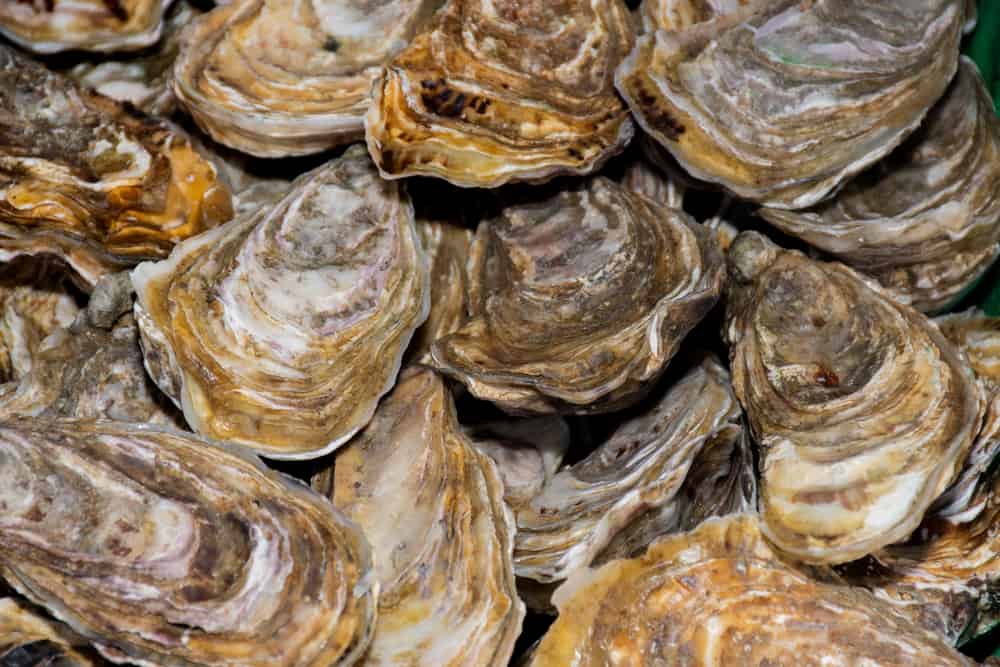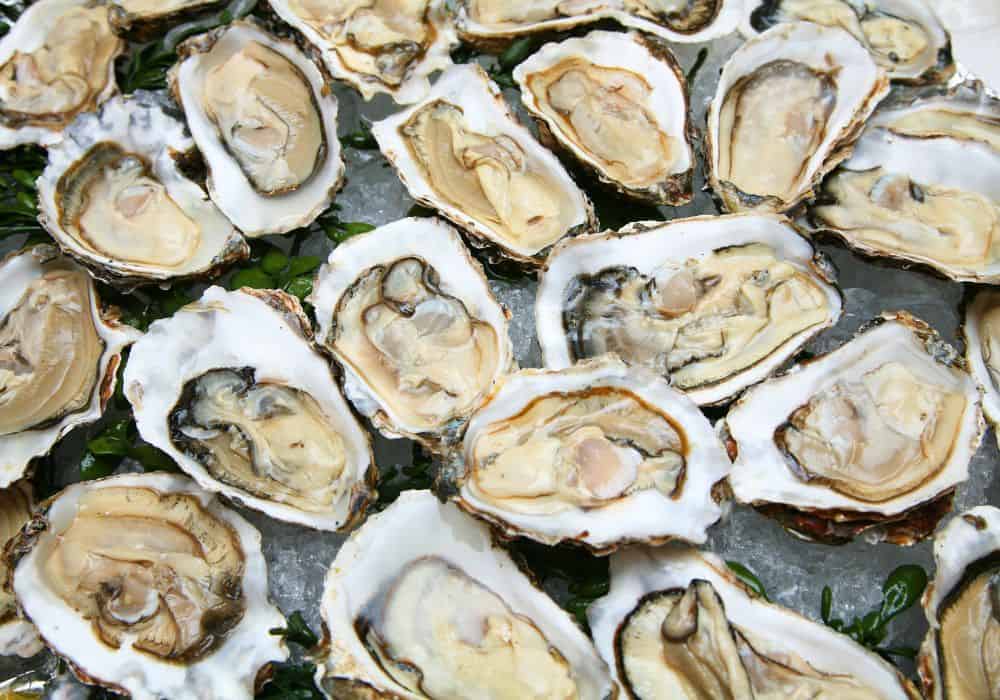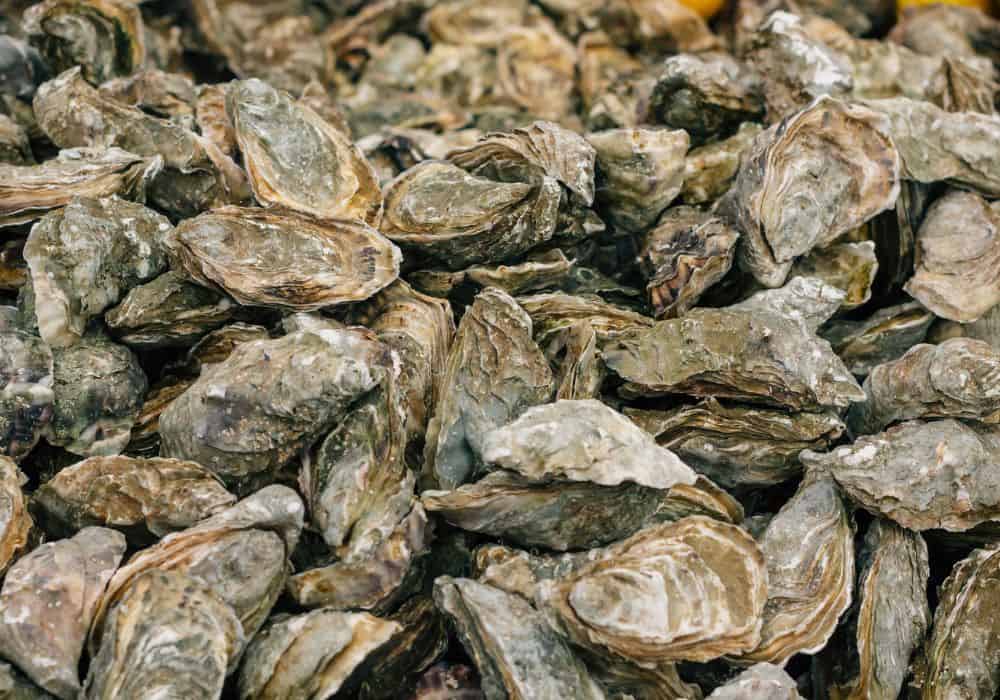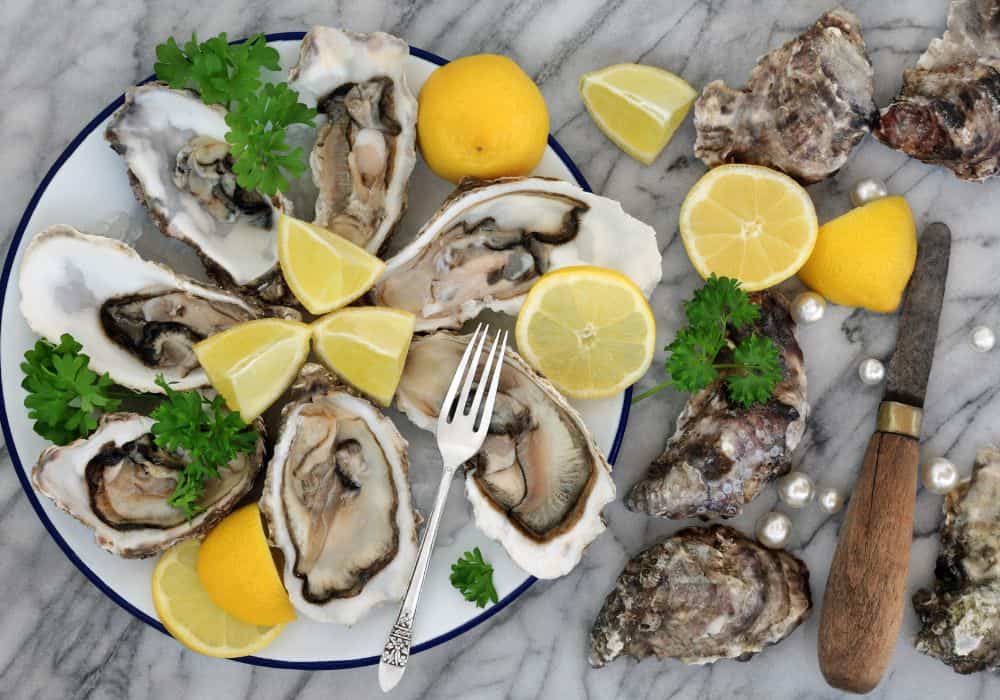Oysters are unlike most marine animals and can appear to be more similar to rocks than living animals. However, they are, in fact, animals, and have some of the most fascinating characteristics in the entire animal kingdom.
In this article, we’re going to explore everything related to oysters, starting with a general introduction and their diet, and ending with their uses and types.
Facts About Oysters
There are hundreds of mollusk species that are called oysters, spread across several different genera. What they all have in common is a hard shell protecting their soft flesh inside.
You can find oysters in nearly every part of the world across many different habitats, specifically in bodies of saltwater or brackish water. They live in oceans, lagoons, lakes, and estuaries. For some simplicity, oysters are categorized into two main types:
Pearl Oysters
While most oysters produce pearls, only those produced by species in the genus Pinctada are valuable. You’re going to learn more about oyster pearls along the line, but most pearl oysters can live over 10 years.
True Oysters
Oysters belonging to the family Ostreidae are called true oysters and are characterized by being sequential hermaphrodites, meaning they can change their gender. Such oysters are born male, but after reaching maturity change their reproduction organs to female.
What Do Oysters Eat?
While there are hundreds of oyster species, all of them are omnivorous and eat a similar diet consisting of phytoplankton and zooplankton.
Phytoplankton
It includes over 5,000 species of microalgae, bacteria, and eukaryotes, and oysters eat the vast majority of them. Phytoplankton primarily consists of carbohydrates, but also some protein and fats, but the nutritional profile varies vastly from body of water to body of water, and even from season to season.
Zooplankton
There are also thousands of species of zooplankton, including amoebas, rotifers, small crustaceans like shrimp and krill, water flea, water slugs, and much more. Oysters eat many of those, depending on their own size and the size of the zooplankton.
Oyster Diet Example
Just to give you a more specific example of an oyster diet we can take a look at one study from 2022, which investigated a diet of West African mangrove oysters living in Lake Nokoué located in Benin.
The scientists investigated the stomach contents of 102 oysters and found that they consisted of 96.4% phytoplankton, and just 1.80% of zooplankton, the rest being other food items.
Out of phytoplankton, green algae called Stigeoclonium Aestivale was the main part of the diet, on average constituting 44.86% of oyster’s diet. The second most eaten phytoplankton was a genus of green-blue algae called Oscillatoria, constituting 13.84% of the diet.
The zooplankton part of the diet consisted of several genera of rotifers, also called wheel animals, and copepods, which are tiny crustaceans.
How Do Oysters Eat?
As oysters have such a varied diet consisting of both phytoplankton and zooplankton, how do they eat? You probably know that oysters aren’t that mobile, so how can they feed on such a wide selection of food?
These shellfish are what’s called “filter feeders”, meaning they filter huge amounts of water through their gills and eat anything that gets trapped inside.
As plankton, (e.g., small bits of algae, rotifers) are drifting along the passing water, they get stuck in the oyster and are eventually eaten.
Adults of some oyster species can filter as much as 50 gallons (189 l) of water a day! Such an eating method is not unique to oysters and is also utilized by some species of sponges, crustaceans, and even fish.
Filter feeders are very important for maintaining the health of ecosystems in the water, and as the name suggests, they filter out the surplus of plankton, maintaining the healthy amount of drifting biomass in the water.
What Are Oysters’ Predators?
As oysters aren’t the most mobile marine animals, they’ve evolved hard shells that are difficult to penetrate for most marine animals. Despite that, oysters have many natural predators, including but not limited to:
Crustaceans
There are many crustacean species that prey on oysters, including the blue crab, the green crab, the mud crab, and the lobster. These animals possess powerful claws that can crush the shell of oysters, revealing the soft meat inside.
Fish
Some fish species have powerful jaws and sharp teeth that can penetrate the hard shell of oysters. The most famous example of such a fish is the oyster toadfish, which lives in the Atlantic Ocean and grows up to 12 in (30.48 cm) in length.
Filter Feeders
While oysters are filter feeders themselves, many species of filter feeders, including sea nettles and anemones eat oyster larvae. The most interesting example is probably the boring sponge.
It lives inside the oyster itself, secreting chemical compounds that slowly dissolve the shell of the oyster. Eventually, the boring sponge penetrates the shell and starts eating away the flesh of the oyster.
Starfish
Starfish or sea stars actively hunt oysters by opening their shells with suction cups that are located all over starfish’s feet. Then, starfish extend their stomachs outside from their mouths (yeah, that’s some bizarre biology) and start secreting enzymes that start digesting the oyster.
Oysters Usage
Oysters are widely bred all around the world, primarily in China, Canada, France, the Netherlands, the U.K, and the U.S. Most of the oyster farming is for food, and we’ll cover the most popular oyster species for that later, but there are several other uses for oysters:
Pearl Oysters
The most popular non-food oyster usage is their pearls. Most oyster species can make pearls, but only several belonging to the genus Pinctada are farmed commercially. Such oyster species are called pearl oysters and include species like:
- Akoya Pearl Oyster
- Black-lip Oyster
- Gold-lip Oyster
- Mazatlan Pearl Oyster
Oysters start producing pearl when a piece of debris, usually called irritant, enters the inside of the oyster. Then, to protect itself from the irritant, the oyster starts secreting chemical compounds which result in what’s called nacre.
Nacre, also called “mother of pearl” is a hard and durable material out of which the inner layer of an oyster’s shell is made. The oyster slowly builds layers of nacre around the irritant until it becomes a pearl.
Pearl farmers usually use a piece of polished mussel shell as the irritant, inserting it inside the oyster for it to start producing nacre around it.
Soil Amendment and Fertilizer
Oyster shells are almost entirely made of calcium carbonate, a compound that many plants lack. That’s why crushed oyster shells are sometimes sold as soil amendment and fertilizer.
Gardeners use it to balance the pH level in the soil and guarantee that their plants get all the necessary nutrients.
Food Supplement
In a similar vein, oyster shells are sometimes used to make food supplements to help people with clinically low levels of calcium. Oyster shell calcium can regulate blood pressure and heartbeat. There are even such supplements specifically made for poultry, like farm chickens.
What Oysters Are Bred For Food?
Seafood is the primary reason why oysters are farmed commercially. In most parts of the world, they are considered a delicacy and are usually served raw or sometimes even alive, with various condiments on the side, including vinegar, lemon juice, cocktail sauce, and other sauces.
They’re packed with nutrients, including minerals like zinc and vitamins like vitamin B12. The best part is that oysters have a low-calorie count, making them a great food to indulge in.
Here are some of the most widely bred oyster species that you’re likely to eat:
European Flats (Ostrea Edulis)
Also called Belons, European flat oysters are mostly farmed in France and the United Kingdom. They are loved for their fine taste featuring sweet undertones and a metallic aftertaste, that’s sometimes specified as a “copper” finish.
Atlantic Oysters (Crassostrea Virginicas)
Sometimes called “American oyster”, this type of oyster has a uniquely crisp texture and a salty flavor with a metallic aftertaste. They grow up to 4 in (10.16 cm) in size and are mostly cultivated in the Gulf of Mexico. The U.S raises 85% of all farmed Atlantic oysters in the world!
Pacific Oysters (Crassostrea gigas)
This is the most widely farmed oyster in the world. It’s native to East Asia but is mostly farmed on the Pacific Coast of the U.S. These oysters are famous for their rich, sweet flavor, and creamy texture, but are loved by oyster farmers because of how quickly they grow up.
Pacific oysters reach up to 6 in (15.24 cm) in size and are good to serve in just 2 to 4 years after they start growing, making them perfect for commercial cultivation.
Final Words
We hope this article served as a proper introduction to one of the most fascinating animals on earth. Now you know what and how they eat, what are their natural predators, and the main commercial uses.



